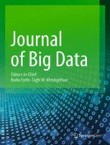Journal of Big Data welcomes submissions to the thematic series "Applications and Development in Linked Open Data (LOD) Cloud".
Today, modern tools and techniques for collection and analysis of data in all fields of Science and Technology are proving to be more complex. The growing complexities are evidenced by the need for a more generalized and standardized description (integration) of the various data sources and formats to allow for flexible exploration of the different volumes of data and varying types. Theoretically, the challenge has been on how to create systems and technologies capable of providing an understandable format for the different (big) datasets, as well as, making the derived formats/standards explicable across the different platforms. Linked Open Data (LOD) cloud is one of the recent technologies that have proved indispensable in this area of topic. The LOD systems consist of a number of machine-readable datasets to machine-understandable systems with Resource Description Framework (RDF) triples or semantic schema that are useful in describing data classes and the underlying properties. By machine-understandable system, we assume that the extracted information or models are either semantically labeled (annotated) to ease the analysis process, or represented in a formal structure (ontology) that allows a computer (the reasoning engine) to infer new facts by making use of the underlying relations. To this end, this special issue proposal intends to capture the state-of-the-art applications and technologies such as the semantic web, machine learning, deep learning, natural language processing, internet of things, knowledge graph, process mining, and artificial intelligence, etc. which encompasses the wider spectrum of the Linked Open Data (LOD). Thus, the articles collected for this issue is expected to provide the readers with a comprehensive overview of the current state-of-the-art within the Linked Open Data framework and the benefits of the supported methods – ranging from the semantic-aware techniques that exploit knowledge kept in big data to improved data reasoning (big analysis) beyond the possibilities offered by most traditional data mining techniques. Henceforth, this special issue presents two main drivers for the Linked Open Data technologies as follows: (i) encoding knowledge about specific data and process domains, and (ii) advanced reasoning and analysis of the big datasets at a more conceptual level.
Particularly, we encourage authors to submit research papers, methodologies, and case studies that focuses on, but are not limited to, the following topics and scientific discourse.
Topics:
- Linked open data (LOD) cloud and emerging applications
- Architectures for massively parallel processing and cloud computing platforms
- Process description languages, syntax, and formats
- Data labelling, integration, and interoperability
- Knowledge graphs and data management
- Distributed networks, Internet of Things (IoT) and deep learning
- Data mining, text mining, sentiment analysis and emerging techniques
- Speech-to-text, video, image classification/analytics
- Machine learning and predictive models/algorithms for big data analysis
- Ontology-driven analysis and exploration of big data
- Semantic web search technologies
- Semantic reasoning and classification methods
- Process mining algorithms and modelling
- Data science, content development, virtual analytics and engineering
- Methods dealing with big data analysis – volume, variability, vagueness, vocabulary, value
- Machine-readable and resource description frameworks (RDF)
- Machine-understandable systems and taxonomies
- Techniques for annotation of big data using ontological schema and vocabularies
- Property restriction and web ontology language (OWL)
- Trends and advances in LOD systems that is driving technological, healthcare systems, software standardization, and educational innovation
The submitted papers should hold a significant novelty in the research design, methodology, and results both in its theoretical and practical applications to any of the aforelisted topic areas to be considered for publication in this issue.
Submission Guidelines:
The Journal of Big Data uses EM Manuscripts Central to peer review submissions. Please carefully read the “guide for authors” before making a submission. Submissions should be made through the Journal’s submission platform (https://www.editorialmanager.com/bigd/default.aspx). Please ensure that your manuscript is submitted to the correct thematic series by selecting the Article Type for submissions to this special issue “SI Applications and Development in Linked Open Data (LOD) Cloud” in the drop-down menu upon submission. Also, ensure to indicate in your cover letter that you will like your manuscript to be considered as part of the aforementioned special issue. All submissions will undergo rigorous peer review according to the Journals’ standard guidelines and accepted articles will be published within the journal as a collection.
Please contact the lead guest editor Kingsley Okoye (kingsley.okoye@tec.mx) for more inquiries or information about this special issue collection.
Deadline for submission: extended to 31 December 2021
Guest Editors
Dr. Kingsley Okoye, Ph.D, Tecnologico de Monterrey, Mexico
Lead Guest Editor
Asst. Prof. Samira Hosseini, Ph.D, Tecnologico de Monterrey, Mexico
Guest Editor
Prof. Amlan Chakrabarti, Ph.D, University of Calcutta, India
Guest Editor
Dr. Julius T. Nganji, Ph.D, University of Toronto, Canada
Guest Editor
Submissions will also benefit from the usual advantages of open access publication:
- Rapid publication: Online submission, electronic peer review and production make the process of publishing your article simple and efficient.
- High visibility and international readership in your field: Open access publication ensures high visibility and maximum exposure for your work - anyone with online access can read your article.
- No space constraints: Publishing online means unlimited space for figures, extensive data and video footage.
- Authors retain copyright, licensing the article under a Creative Commons license: articles can be freely redistributed and reused as long as the article is correctly attributed.
